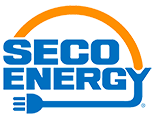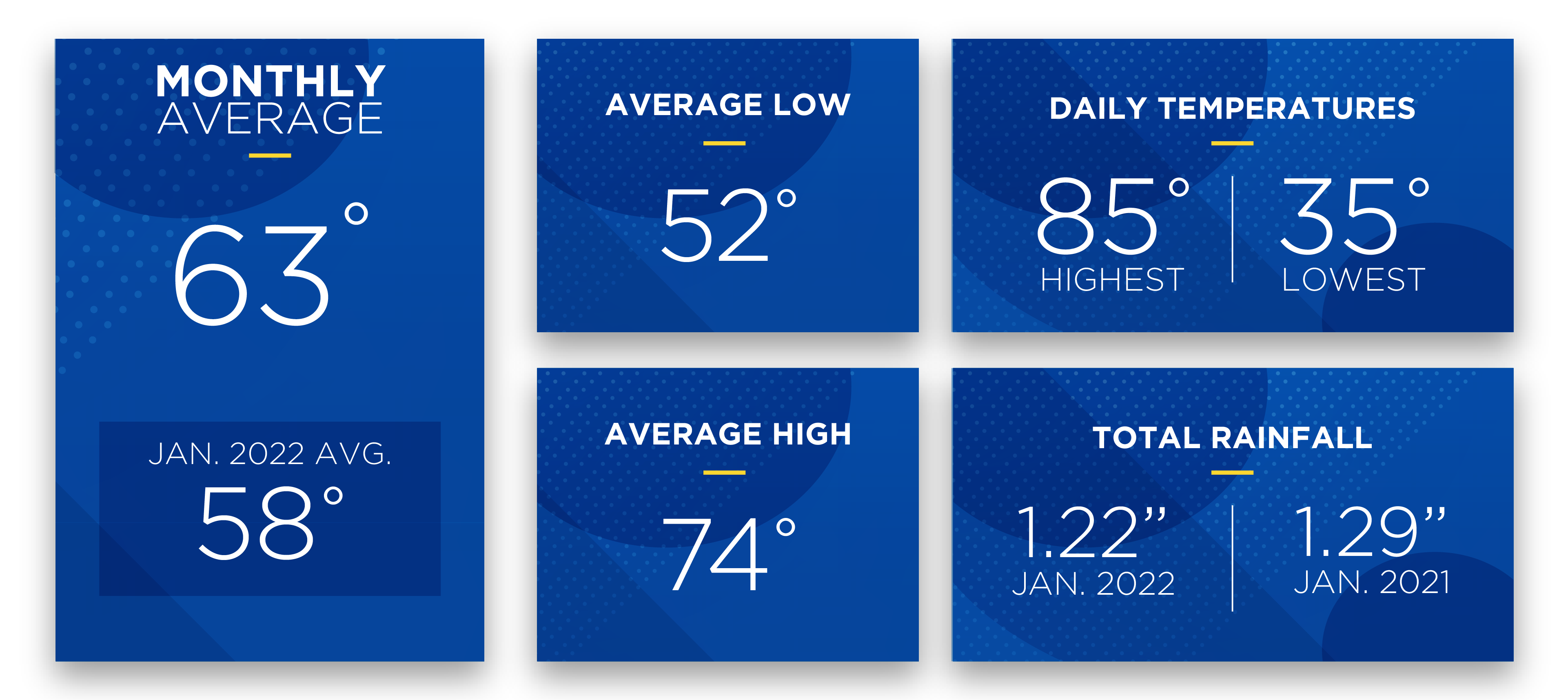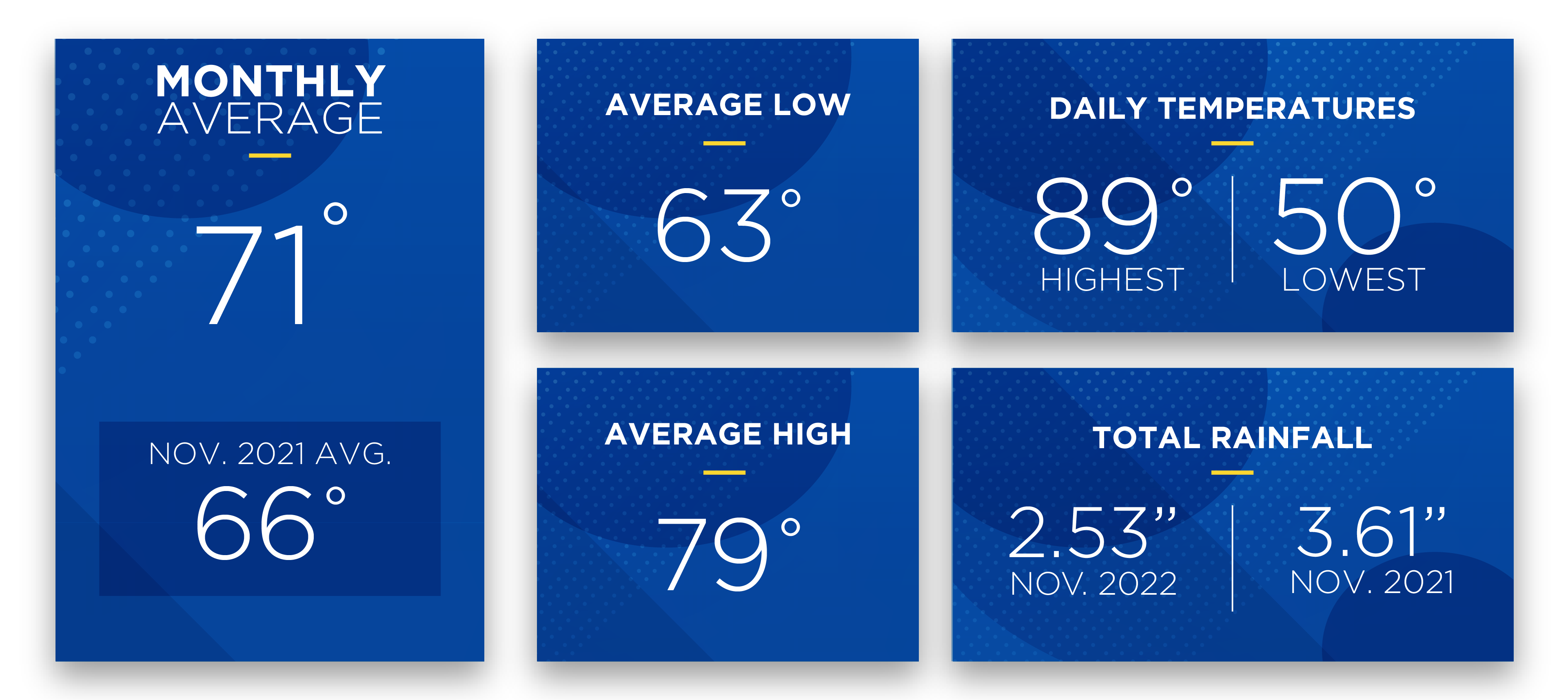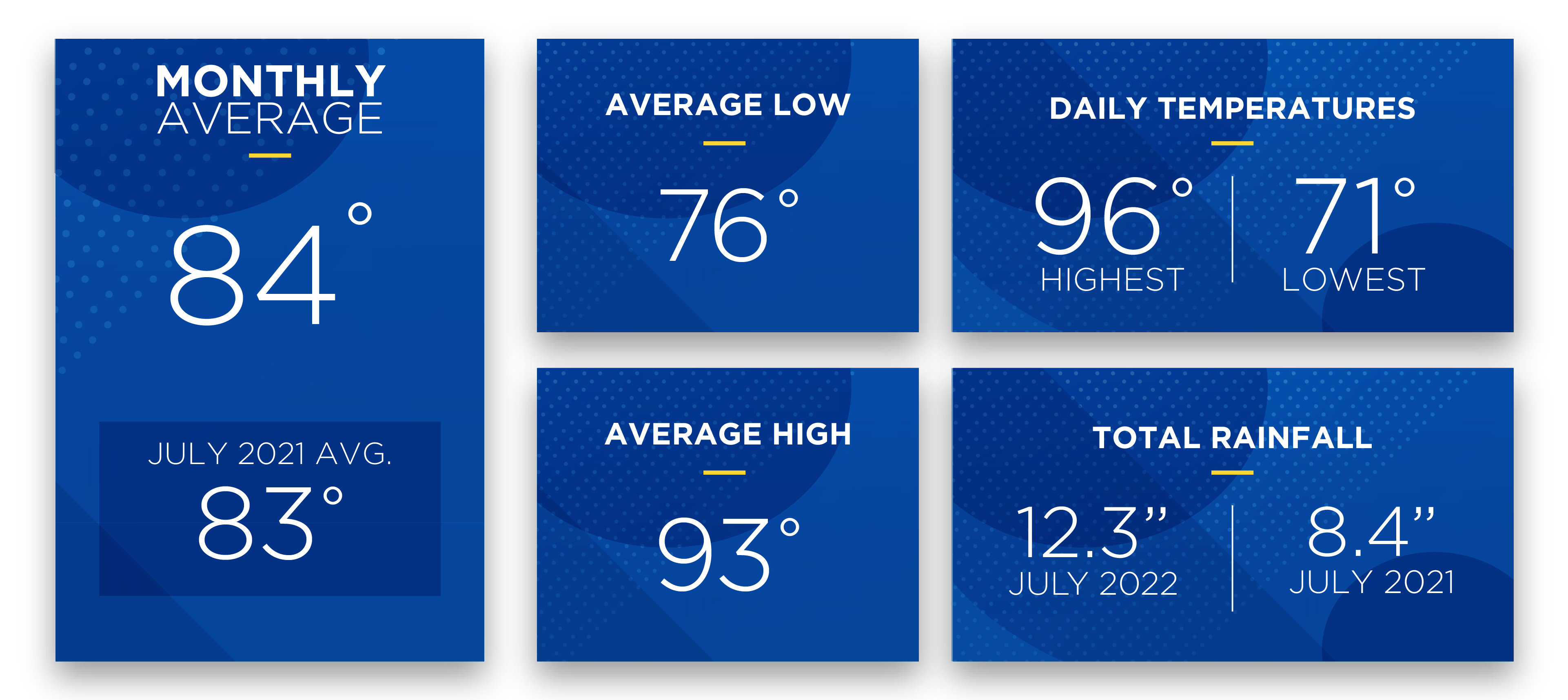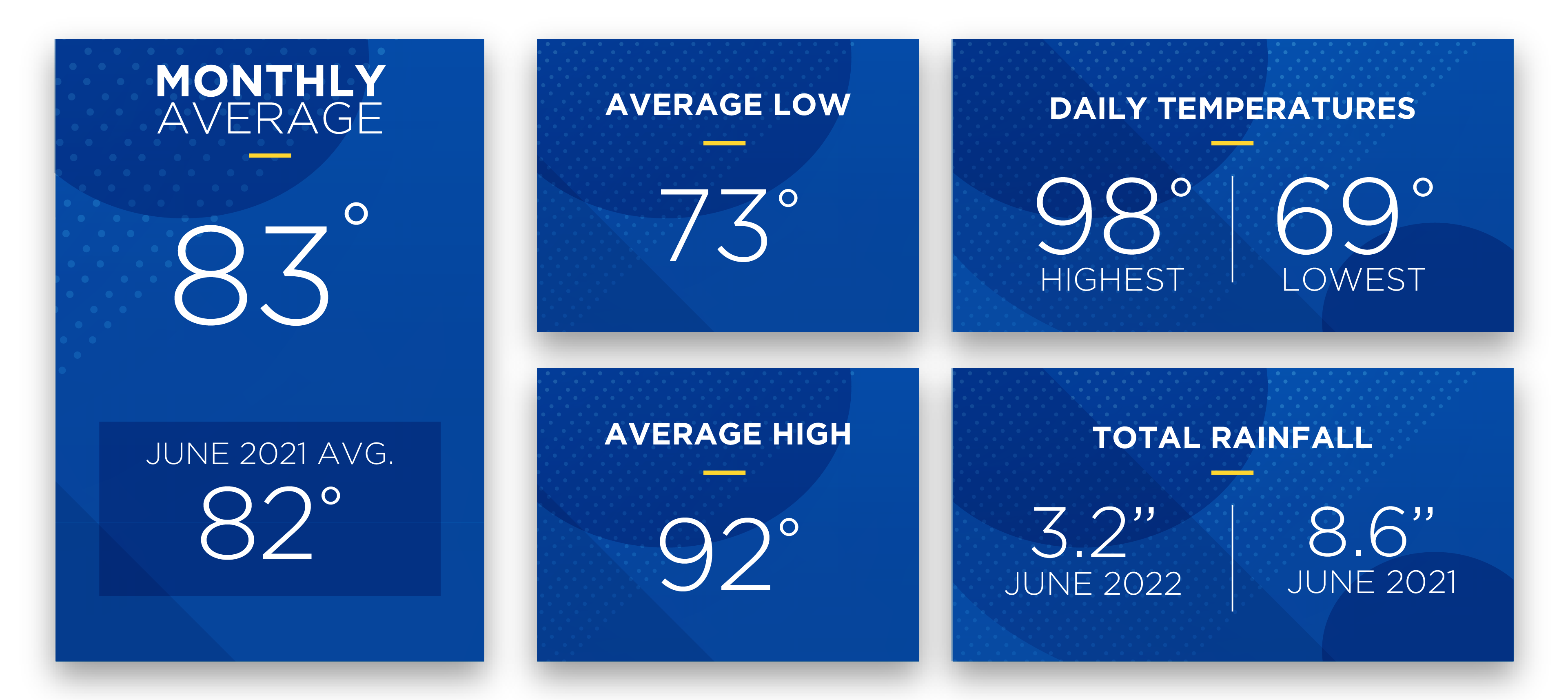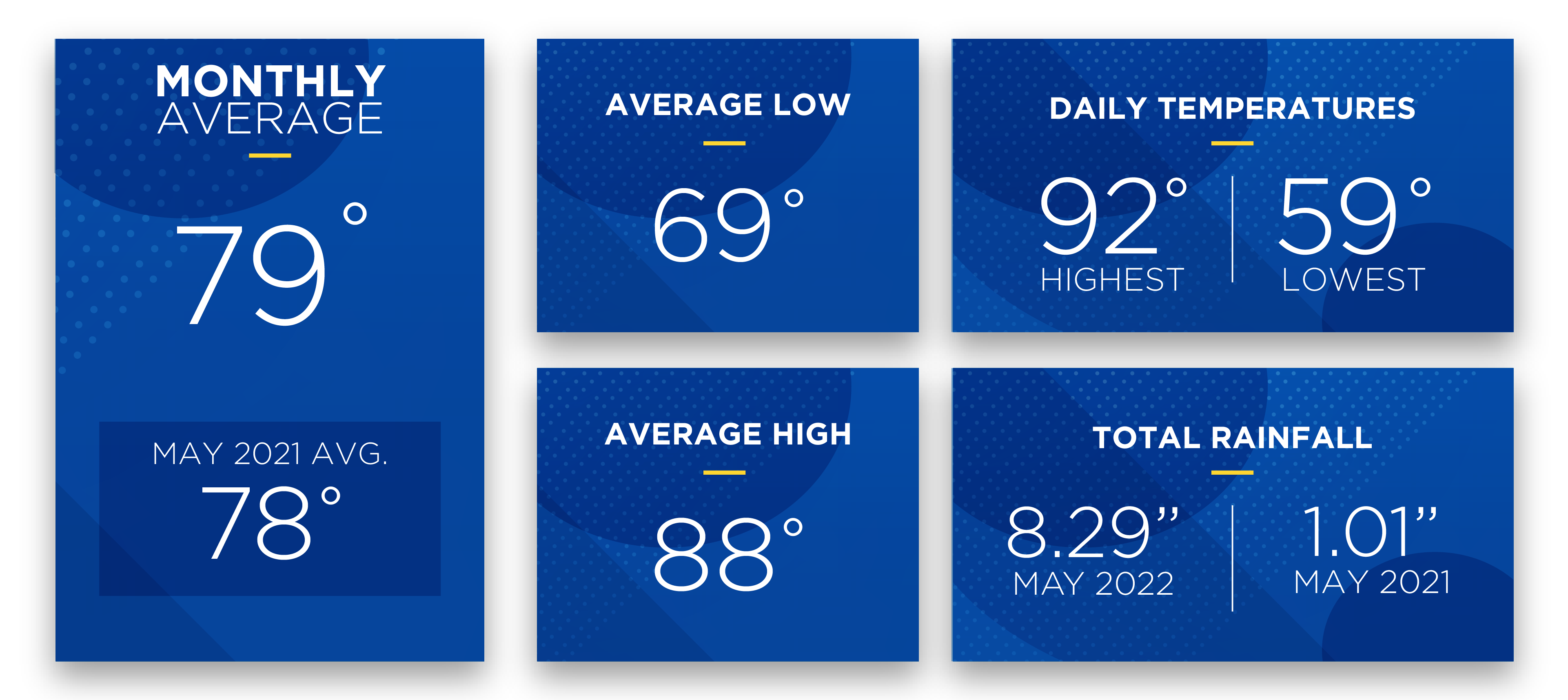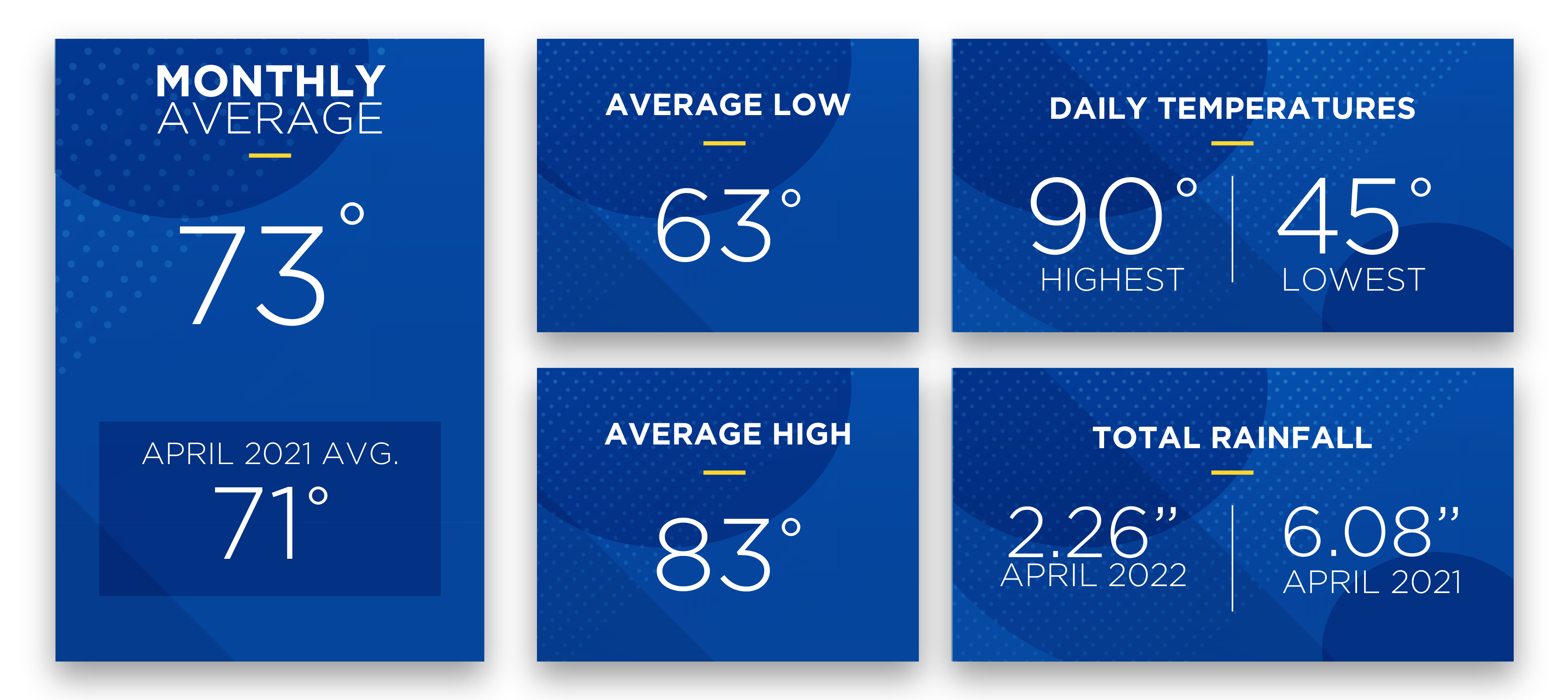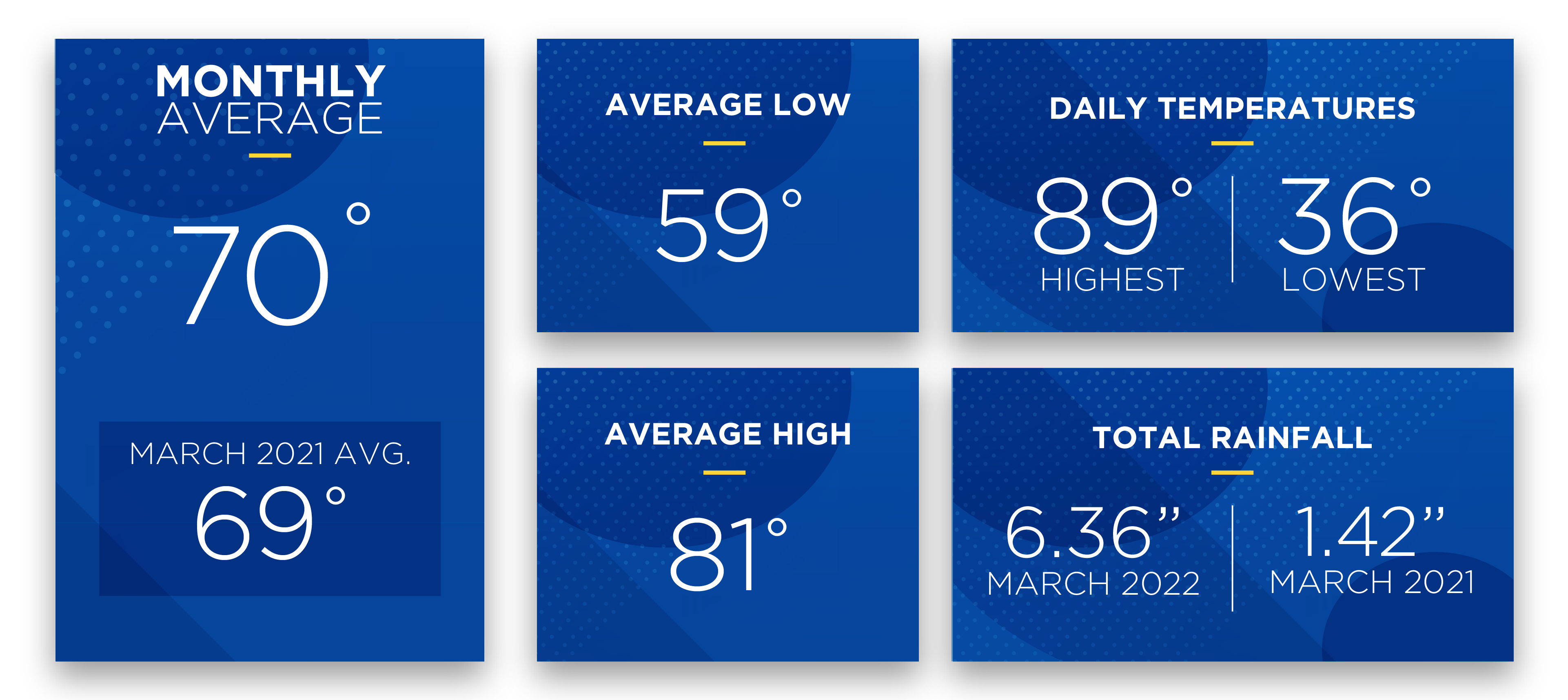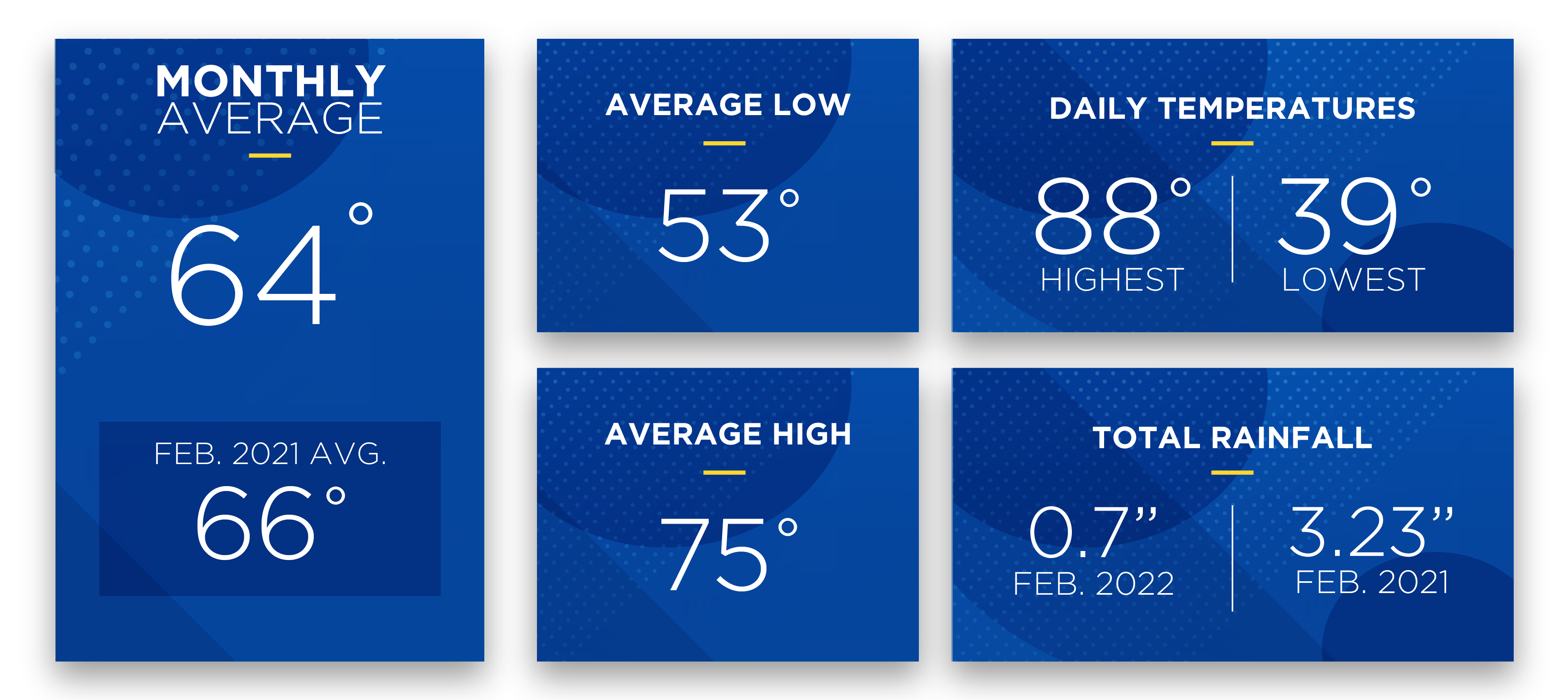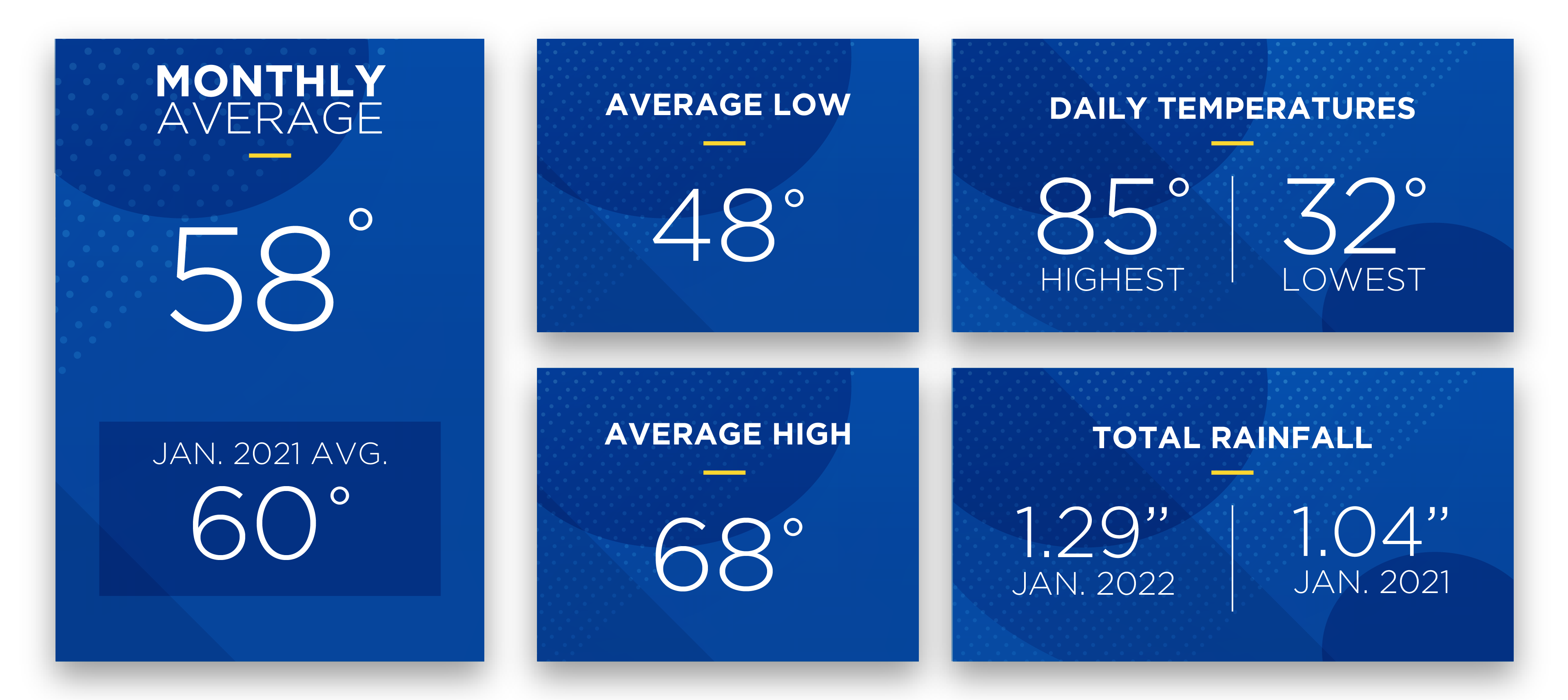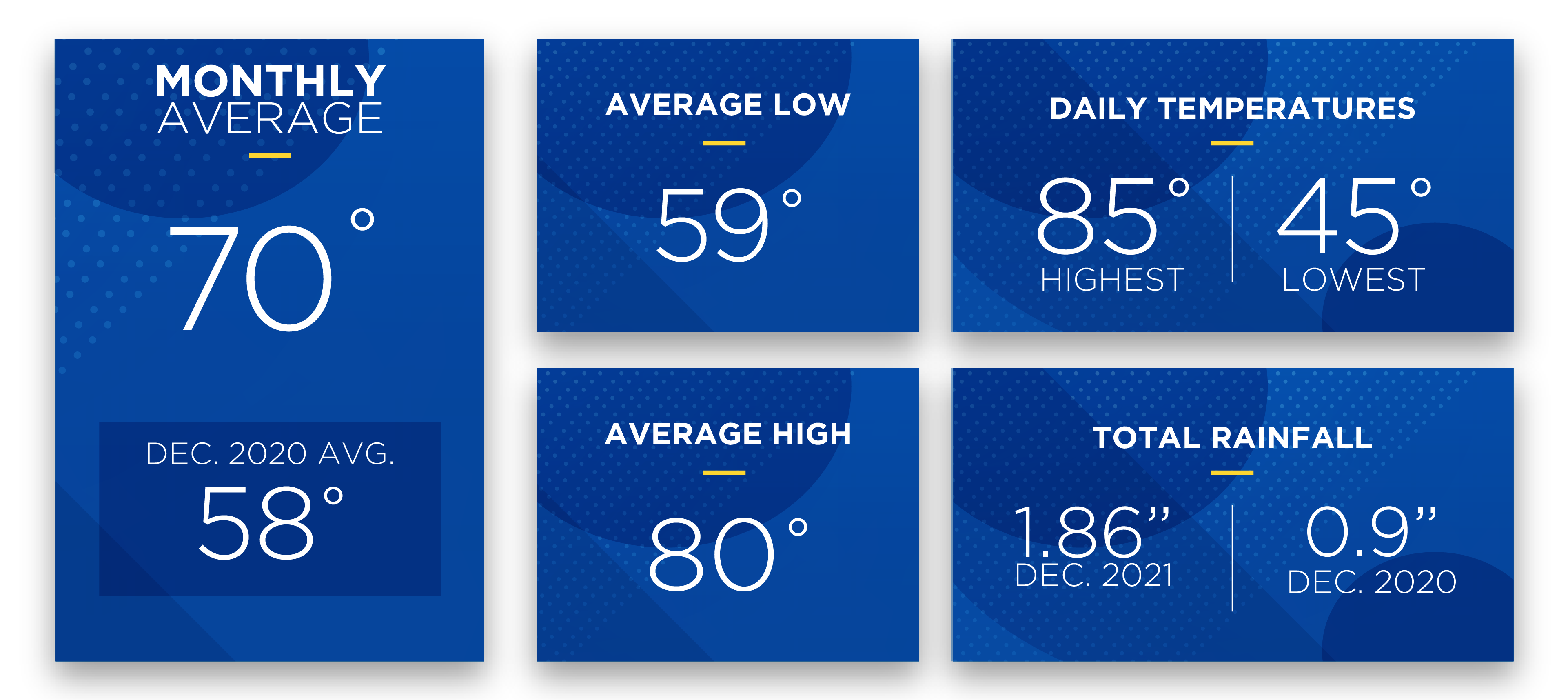January 2023 Sunshine State Stats
January 2023 temperatures ranged between the 20s and 80s in the same month. Temperatures dropped to as low as 26 degrees on January 15 (data from the Ocala KOCF weather station) in SECO Energy’s service area and highs climbed to 85.
The average temperature for January 2023 was 63 degrees, which was 1 degree lower than last month’s average. The average high was 74 degrees while the average low was 52 degrees. With the shifting temperatures from very cold to hot during the month, members may notice increased kilowatt hour (kWh) usage as they used both heating and cooling in their homes. The HVAC is the largest energy-user in Central Florida homes – accounting for 35 to 40% of kWh usage on average.
The highest daily recorded temperature (data from the Leesburg KLEE weather station) in January was 85 degrees and the lowest 35 – the highest daily recorded temperature in December was 83 degrees and the lowest 29. Rainfall in January 2023 was well below the average of 3.32 inches to measure only 1.22 inches.
February forecast:
Expect daily highs to reach the low 80s with lows in the mid-50s in February 2023. The Old Farmer’s Almanac predicts winter temperatures will be between 1 to 4 degrees below average, which has held true for the Winter 2023 season.
To check historical usage, log into SmartHub to view past bills and consumption charts. If your usage is high, SECO offers several energy-efficiency tools to help you identify energy wasters. Take the Home Energy Assessment to receive a detailed email tailored to your home’s features and lifestyle. The energy-saving advice will provide low-cost ways to decrease your usage – and your electric bill.
To easily calculate how much energy your appliances, lighting, electronic devices, and other energy-using items in your home consume, use the Energy Estimator.
